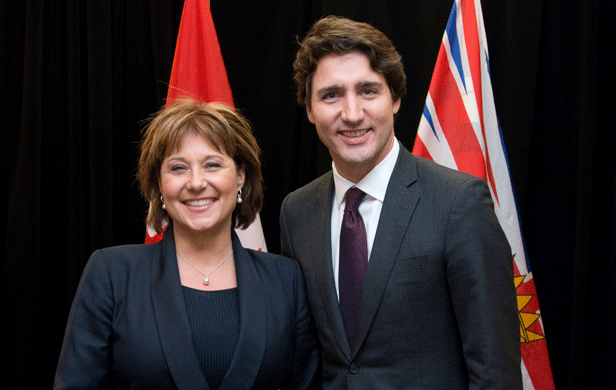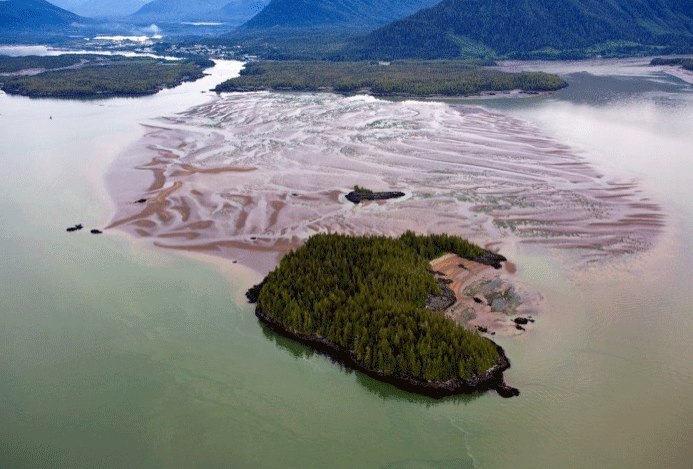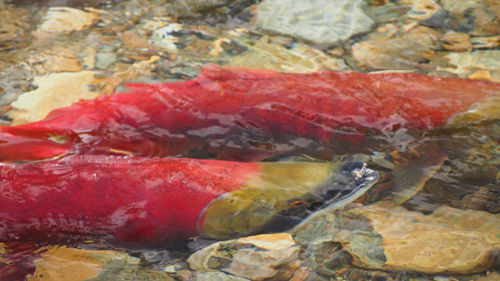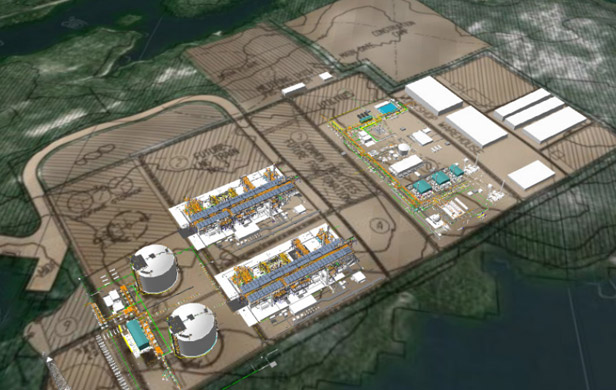
By Graeme Pole
In 1966, American psychologist Abraham Maslow wrote: “I suppose it is tempting, if the only tool you have is a hammer, to treat everything as if it were a nail.” Fifty years later, a corollary offers itself: If every nail appears familiar, you may be inclined to pick up the same hammer to deal with it.
In taking office, Prime Minister Justin Trudeau has been handed the enormous toolbox that is the Canadian federal bureaucracy. And as any handyperson knows, in an unfamiliar toolbox there are likely to be surprises, good and bad. You can tell if the former owner of the toolbox was practised in their craft and if they took care of their possessions; if they used their tools appropriately or if they opened every can of paint with the same, now half-enamelled screwdriver. As you root through the toolbox you may find gems and you may find broken tools, or worse – tools missing that you had expected would be in the box. And when dealing with the bad surprises, you will only notice how broken a particular tool is, how ill-suited it is to your intended purpose, when you go to pick it up for the first time.
PM faces decision of national importance
Prime Minister Trudeau and Environment Minister McKenna will soon be called upon to open their environmental toolbox and make a nationally significant decision in that portfolio: to render a judgement as to whether Pacific Northwest LNG should go ahead. And when the Prime Minister reaches into that toolbox, it is likely that the state of one particular hammer, as it squares with some of his publicly stated views, will give him pause.
That hammer is the Canadian Environmental Assessment Agency (CEAA). Under the governance of Stephen Harper, that agency became a tarnished, broken instrument. The Canadian public has a vague idea that the CEAA acts in the interest of Canadians in vetting the possible environmental and social impacts of proposed industrial projects. Wrong.
Under Harper, CEAA stopped protecting environment
Thanks to the Harper government’s overhauling of the Canadian Environmental Assessment Act in 2012 and the simultaneous gutting of other federal acts that interleave with it, the CEAA became a pared down version of its former self, carrying out little in the manner of self-initiated analysis. Its principal purpose became to funnel information provided by the industries that it was charged to scrutinize, through a cookie-cutter matrix that yielded uniformly stamped, sugar-coated findings of “not likely to cause significant adverse effects.” The word “no,” vanquished from its vocabulary, was replaced by a mantra of “approve and mitigate.”
Long gone from the agency’s own toolkit is any kind of prybar that could wrench the bent nail of an ill-founded proposal, sending its (typically) foreign proponents packing from Canadian soil. Gone is impartial study, replaced by the heavily edited “science” – often hurriedly collected in one field season – by legions of contractors on the payroll of industry. Gone is the precautionary principle, in which the public and the environment are protected from harm by not committing to a project on which there is no scientific consensus as to the possible adverse effects.
Federal assessment ignores salmon

As an example of this brokenness, witness in part the CEAA’s recent assessment of the proposed Pacific Northwest LNG terminal, delivered for public comment on February 10. Debate persists among scientists as to the potential adverse effects of the proposed location of this massive industrial plant and its LNG vessel berths, within the Skeena River estuary. One scientific camp claims that the proposed site is adjacent to the most productive and vital 0.8 km2 in the entirety of the 54,400 km2 Skeena River watershed – Flora Bank. Nonetheless, the CEAA has passed judgement and, with regard to the well-being of salmon, it has given the project a thumbs-up.
For a supposedly impartial agency to rule on such debate when the scientific jury is out is to beg two disasters. The first is a certainty: The utter loss of public trust in government to protect and uphold the integrity, in all senses, of the land. The second, in this particular instance, is a distinct possibility: The depletion or loss of wild salmon from the second most productive salmon watershed in BC, which also ranks among the more productive salmon watersheds in the world. It follows that those salmon might also disappear from the ocean ecosystem, potentially making this a global issue.
Petronas twice ordered to redo salmon studies
The scientific parrying pertaining to Pacific Northwest LNG’s possible threats to wild salmon is well documented elsewhere, and to be fair to the CEAA, the agency initially deemed the proponent’s salmon science so poor, it sent the contractors back to their field notes. Twice. In a nutshell: There is general agreement that the eelgrass of Flora Bank is important to salmon. But how important? And can eelgrass habitat be recreated at point B if destroyed at point A? And will that artificial habitat be of use to salmon or will it merely just fulfil a checkbox requirement, ticked by another permit-hungry proponent as it steamrolls across the landscape?
The salmon enigma

Anyone familiar with the history of tidal fisheries management in British Columbia will be aware that controversy reigns. Despite extensive scientific enquiry and vast public funds expended, no expert can predict with accuracy how many salmon will escape and return in a given year. Unexpected bonanza returns arrive with the same frequency as the fishery going bust. In 2013, several First Nations along the Skeena River took the unprecedented step of closing their commercial and sustenance fisheries in response to that year’s salmon crash, when the return was a third of what had been predicted. The precautionary principle dictates that we should not be messing further with something that we do not understand to this degree.
Salmon are cold water-adapted species. The increases to the overall temperatures of freshwater and ocean water are propagating a monumental constellation of stresses. Spawning streams are often dry due to reduced flows. Parasites and diseases flourish. Ocean acidification is killing salmon food. The ranges of many ocean species are shifting northward, bringing together species that formerly did not mingle en masse. Yet salmon are not officially a species at risk. So, despite being the miracles that they are and with question marks clearly hanging over their population dynamics and habitat, wild salmon, as far as the CEAA is concerned, escape the regulatory scrutiny that, say, the harbour porpoise (a species at risk) rightfully merits. It is telling that a search for “salmon” in the CEAA’s recent assessment of Pacific Northwest LNG returns 51 matches. A search for “harbour porpoise” returns 116 matches.
“Significant adverse effects” unlikely: CEAA
It then follows as no surprise that:
[quote]The Agency concludes that the Project is not likely to cause significant adverse environmental effects on marine fish and fish habitat, including marine plants, taking into account the implementation of mitigation measures.[/quote]
The CEAA’s specific response to the multitude of concerns for wild salmon expressed by First Nations, scientists, and the general public is a damning indictment of how the agency has been charting its course: Implement eighteen mitigation measures and drop the following tell-tale comment into the document.
“The Agency considers that the involvement of Aboriginal groups in the design and implementation of follow-up and monitoring programs related to traditional fisheries and marine resources [after project construction] could contribute to increasing the confidence of Aboriginal groups in the results of the EA [environmental assessment] related to the current use of lands and resources for traditional purposes.”
In other words, the CEAA is advocating the prevailing industry tactic of abrogating the concerns of First Nations by offering them promises of jobs and money. This is a cultural obscenity. Imagine being a young, formerly unemployed First Nations person, now paid to stand watch over the LNG industry’s activities on the BC north coast as your sustenance birthright – wild Pacific salmon – disappear. Imagine even suggesting that such a pathway is appropriate. Is it any wonder that there is a First Nations camp on Lelu Island adjacent to Flora Bank?
Greenhouse gases don’t go ignored
But all is not lost in the cause of environmental science. Scroll through the pages of this 257-page document and the sun breaks through the approve-and-mitigate gloom. Somewhere along the progression from initial draft to publication of the CEAA’s conclusions on Pacific Northwest LNG, a federal election intervened. Voters breathed new life into government. The paragraphs that reflect it – no doubt written by employees of the CEAA now happy to be freed from the bonds of Harperism – flash like salmon in a bed of eelgrass. It is perhaps fitting that this watershed moment in Canadian environmental assessment revolves around protecting a watershed – the Skeena River, its species, and its people.
One sentence, in particular, reveals incisive teeth in the very place where the agency cannot dodge the real-world science of cause and effect:
[quote]The Agency concludes that the Project is likely to cause significant adverse environmental effects as a result of greenhouse gas emissions after taking into consideration the implementation of best achievable technology and management practices and compliance with the B.C. Greenhouse Gas Industrial Reporting and Control Act.[/quote]
Whether intending to or not, by publishing that sentence, the CEAA has handed Prime Minister Trudeau an utterly new and very powerful tool. It, too, is a hammer. But this isn’t the same one that has been swung for decades by the lackies of bureaucracy as they predictably drove home the nails of development. It is more akin to the gavel that a magistrate bangs on the bench while barking, “Case closed!”
From wellhead to waterline

According to the report, the CEAA accepts the proponent’s prediction that the Pacific Northwest LNG plant itself would create 0.27 tonnes of CO2-equivalent (CO2e) per tonne of LNG produced. The agency says that this, obviously, is a bad thing, but then makes a quantum leap, delivering a miracle in the practical context of recent Canadian environmental science.
In an abrupt departure from how the BC’s Environmental Assessment Office has chosen to evaluate the same project, the CEAA has dropped the blinders and intends to evaluate the effects of the project’s greenhouse gas emissions from wellhead to waterline. Long ago flushed out of the fold, the inherent common sense of this approach has finally come back to the pen. The proponent, no doubt nervous, has already began quibbling over the details that such scrutiny brings to light, and is attempting to frame the total greenhouse gas emissions increase of the project as “insignificant” in the global context. (The global increase would be 0.015 percent.)
But the CEAA is not dissuaded. The document explains that getting the fracked gas out of the ground and piped across BC to Pacific Northwest LNG would create another 0.33-0.44 tonnes of CO2e per tonne of LNG produced (depending on the source gas). This makes an upper threshold of 0.71 tonnes of CO2e per tonne of LNG – a far cry from the global industry’s current (and very dirty) average of creating 0.58 tonnes of CO2e per tonne of LNG.
Just one project = a fifth of BC’s total GHG’s
The total effect of the project would be to increase BC’s greenhouse gas emissions by between 18.5 percent and 22.5 percent, and Canada’s greenhouse gas emissions by between 1.65 and 1.95 percent. Pacific Northwest LNG would be the third-largest emitter of greenhouse gases in Canada’s notoriously dirty oil and gas industry, and the dirtiest that deals strictly with fracked gas. Forget that BC’s Premier Clark brands her darling not-yet-an-industry as “clean,” when it comes to LNG, the CEAA is clear: The project would create tarsands-scale emissions.
Petronas project would kill climate targets
In full operation Pacific Northwest LNG would account for 32.1 percent of BC’s mandated greenhouse gas emissions target for 2020, thus rendering achievement of that target impossible. Canada has committed to reducing greenhouse gas emissions by 200 million tonnes per year from current levels, by 2030. Pacific Northwest LNG would add up to 13.98 million tonnes of emissions per year, also thwarting that objective.
Will project face true climate test?
The prime minister has announced that a “climate test” will now be required for all large-scale fossil fuel projects, but with regard to Pacific Northwest LNG the CEAA has already done the grunt work for him. Pacific Northwest LNG is an F-student in and F-industry. No amount of “offsetting” or carbon credit purchases (among the document’s suggested mitigations) should be employed to give the project a free pass to go belching forth into the atmosphere.
With regard to the project’s site at Lelu Island, this is where the circle closes; where, if Prime Minister Trudeau is willing, the gavel should firmly come down. Greenhouse gases contribute to climate warming. A warmer climate threatens salmon and their habitat, from near treeline to out in the open ocean. Threaten salmon and you threaten not just those miracles of nature but the First Nations of northwestern BC whose cultures have evolved around, and which continue to depend on wild salmon.
Some things just can’t be “mitigated”

No document, no agency of government, no foreign-owned consortium can mitigate against the loss of a human culture. The lead player in this project, Petronas, has run roughshod over native peoples in its dealings around the globe, particularly at home in Malaysia. Until now, our governments have been party to Petronas and its corporate clique, with their feigned respect for BC First Nations; bidding the company to industrialize the land without sincere regard for the effects on its people. In doing so, our governments, provincial and federal, have failed to represent and to protect the people of BC who are being affected, and who will continue to be most affected, by the proposed LNG industry. That is why so many residents of northwestern BC, First Nations and non-, are putting themselves on the line – on the banks of the Wedzin Kwah, at Madii ‘Lii Camp, and on Lax Lelu. These are not camps of “protest” or “resistance”; they are statements of rightful presence by citizens to whom has fallen the dutiful obligation to protect their home from the outright invasion that would render it ruined.
Don’t forget Paris
Speaking at the Paris Summit in November 2015, Prime Minister Trudeau addressed Canadians regarding the collective effort to reduce the emissions that are driving climate change:
[quote]People want to do more, but they want to know that what they do fits into a bigger picture, because there is no point in bending over backwards if your neighbour or your government is not also doing its part to ensure that we all have the maximal impact together. There can be no laggards in this.[/quote]
Prime Minister Trudeau, many among the First Nations and other residents of northwestern BC look to you for progressive change. Match their collective courage. They will have your back if you do. Reach into a new place in your toolbox. Pick up the gavel, swing it firmly, and dismiss the case for mega-scale LNG development in Canada.
The final round of public comment on Pacific Northwest LNG is open until March 11, 2016.
Find the source document here: http://www.ceaa.gc.ca/050/documents/p80032/104785E.pdf
Email comments to: GNLPacificNorthwestLNG@ceaa-acee.gc.ca
Copy them to Justin.Trudeau@parl.gc.ca; Catherine.McKenna@parl.gc.ca; and to your MP.
Graeme Pole lives near another LNG “ground zero” – in the Kispiox Valley, near the route of the Prince Rupert Gas Transmission Project.


Some things and actions simply cannot be mitigated. In the case of Sukanto Tanoto, sole owner of the conglomerate that owns the company that owns the company that owns the company that owns Woodfibre LNG proposed for Howe Sound is responsible for the destruction of the rainforest in Sumatra and Borneo. Why would anyone suppose the he would be more careful with the environment in Howe Sound. His business practices are equally questionable so why would anyone besides our Premier and Rich Coleman suppose that it will be a profitable venture for BC or Canada. it will only be profitable for him. And the public will pay the price if there is an accident at the pipeline, the plant, the storage vessels, or the 1000′ tankers enter and exiting Howe Sound. There are not any LNG regulations in place to oversee and enforce shipping of LNG. We all need a no to these projects because the risks/costs far outweigh the benefits.
Worthy of note that harper ‘approved’ many permits for clark’s misguided missions to destroy our environment during the last ‘extended election’ campaign when they both knew his government was dead man walking.
http://www.desmog.ca/2016/02/19/site-c-dam-permits-were-quietly-issued-during-federal-election
While I’m not a proponent for fracking/ LNG I see it as a short term alternative for the lesser of two evils . ie super heated tar sands bitumen loaded on tankers.
Excuse me for my ignorance but……do they HAVE to build the terminal on Lelu Island?
Could they not relocate it further away from the area to mitigate habitat loss? Regardless of the cost. Especially since this seems to be a major sticking point with the natives and the environmentalists.
If both levels of govt and Petronas are hell bent on this and it seems almost a foregone conclusion……. time to look at all options?
Good point. Why not pipe it beyond the area of contention, and AROUND Lelu Island. Better still, why not pipe it up the McKenzie Basin to Tuktayutuk where it is i) colder, thus easier to compress, ii) closer to the nonexistent market in Asia and iii) in the midst of huge tracts of natural gas
I believe fracking should be banned for the same reasons that Governor Andrew Cuomo of New York State banned it. The science told him it is was bad for human health and bad for our environment. He said those criteria take priority over jobs. I totally agree.
Not to mention the GHG emissions from shipping LNG 7,000 km across the Pacific Ocean. And GHG emissions when the LNG is burned at the place of use.